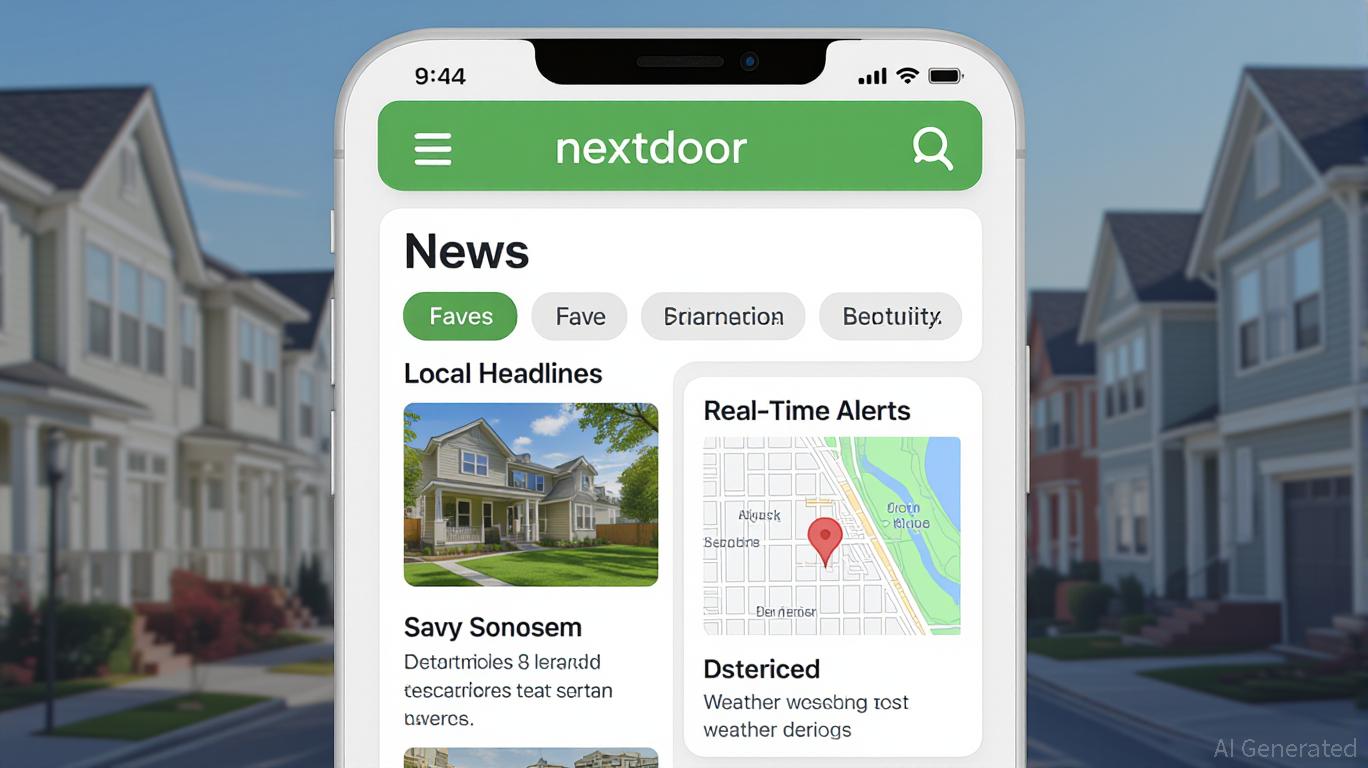How might the tech rally impact the performance of AI-related stocks?
Nextdoor's Hyperlocal Pivot: Can AI and Partnerships Transform It from Niche to Essential?
In a crowded social media landscape dominated by global giants like Meta and
, (NASDAQ: NEXTD) has bet its future on a radical shift: transforming itself into a hyperlocal utility. By integrating AI-driven recommendations, real-time emergency alerts, and partnerships with over 3,500 local news outlets, the platform aims to move beyond its reputation as a hub for neighborhood gossip to become an indispensable tool for daily life. But can this pivot drive sustainable user engagement and revenue growth—or is Nextdoor overestimating its ability to compete in a fragmented market? Let's dissect the strategy and its investment potential.
The Pivot: From Social Network to Local Utility
Nextdoor's 2025 strategy is a direct response to its core challenge: low engagement. While boasting 100 million registered users, only 25 million are weekly active—a metric the company aims to boost by prioritizing utility over casual chatter. The key pillars of this shift include:
AI-Driven Recommendations (Faves):
Powered by an AI language model trained on 14 years of neighborhood conversations, “Faves” answers hyperlocal queries like “Best family-friendly hiking spots?” or “Who's a reliable plumber?” by synthesizing past user posts. This cuts through the noise of repetitive threads and positions Nextdoor as a decision-making tool.Hyperlocal News Integration:
Partnerships with 3,500+ local news outlets (e.g., San Francisco Standard, The Toronto Star) embed tailored stories into user feeds. By June 2025, this feature reached 77% of U.S. cities, delivering over 50,000 weekly localized articles. The goal: to leverage trusted journalism to attract users seeking actionable, community-specific information.Real-Time Emergency Alerts:
Weather warnings, power outages, and wildfires are displayed on a neighborhood map via partnerships with data providers like Samdesk. These alerts, which override non-urgent content in “red-state” emergencies, address a clear safety need and reduce reliance on fragmented municipal apps.
The Synergy of Partnerships and AI
The genius of Nextdoor's strategy lies in its synergistic ecosystem:
- For Local News: Declining ad revenue has left many local outlets struggling. Nextdoor drives traffic to these sites, creating a win-win. Early adopters like Flushing Times report significant traffic spikes, suggesting this could revitalize niche journalism.
- For Users: The combination of news, alerts, and Faves creates a one-stop shop for hyperlocal needs. A parent planning a weekend outing can check hiking trails (Faves), read about a new park cleanup (news), and get a weather update (alerts)—all within the same app.
- For Businesses: Nextdoor's expanded ad tools let local companies target verified neighbors. A ClassPass campaign offering free trial credits (a Q3 launch highlight) exemplifies how high-intent ads can boost revenue while adding value to users.
Note: As of Q3 2025, Nextdoor's stock has underperformed the broader market amid concerns about execution risks. However, a successful engagement lift could catalyze a rebound.
Risks and Challenges
Despite the promise, hurdles remain:
1. Competition: Google and Facebook already dominate local search and news, while governments may launch competing alert systems. Nextdoor's edge lies in its hyperlocal focus—data like “lemonade stands in your block” (unavailable elsewhere) could differentiate it.
2. Execution: The AI's reliability is critical. A misfiring recommendation or delayed alert could erode trust. Early adopters in select U.S. markets will be key indicators.
3. Monetization: While ad revenue from local businesses is promising, scaling programmatic ads without alienating users will require finesse.
Investment Thesis: Buy the Dip or Avoid the Pit?
Nextdoor's pivot is bold and strategically sound, but success hinges on execution. Here's why investors should pay attention:
- Engagement Metrics: A 10%+ jump in weekly active users (to ~28M) would validate the utility shift. Track Q3 2025 results closely.
- Ad Revenue Growth: Local businesses desperate for visibility could drive a 15–20% revenue boost via self-serve tools and AI-targeted campaigns.
- Valuation: At a P/S ratio of ~2x (vs. peers like
The Bottom Line
Nextdoor's hyperlocal pivot is a high-stakes gamble—but one with clear rewards if it succeeds. By merging trusted news, AI-driven practicality, and community safety into a single platform, it's redefining what a neighborhood network can be. For investors, this is a speculative buy for those willing to bet on execution. Monitor Q3 engagement and ad traction; a positive outcome could position Nextdoor as the “Google of hyperlocal”—a category too valuable to ignore.
Disclosure: This analysis is for informational purposes only and not financial advice. Always conduct your own research.
Sign up for free to continue reading
By continuing, I agree to the
Market Data Terms of Service and Privacy Statement
Aime Insights
What are the potential risks and opportunities in the oil and gold markets?
How does Nvidia's AI chip dominance affect its competitive position?
What are the implications of the Fed's data blackout for market analysis?

Comments
No comments yet